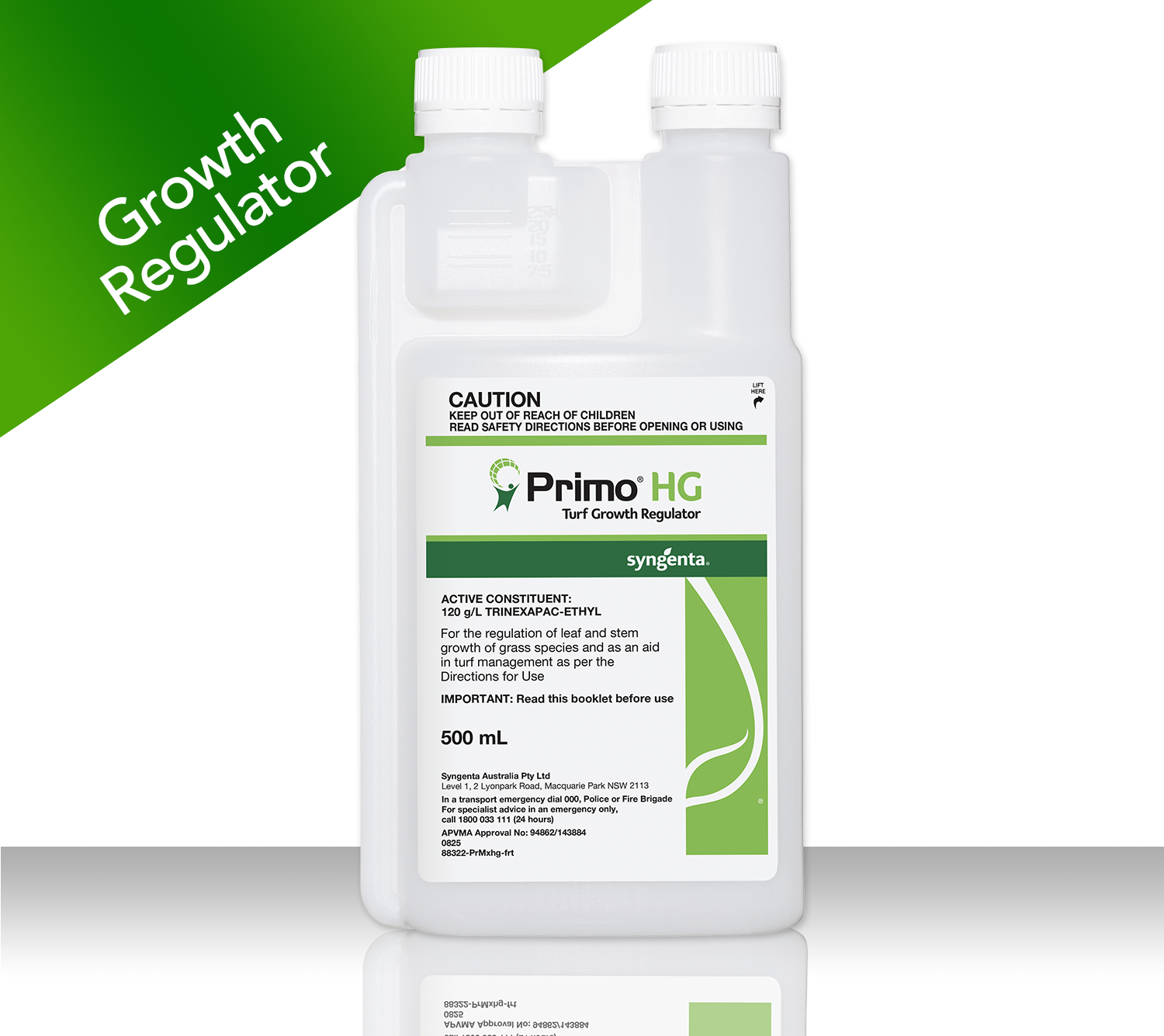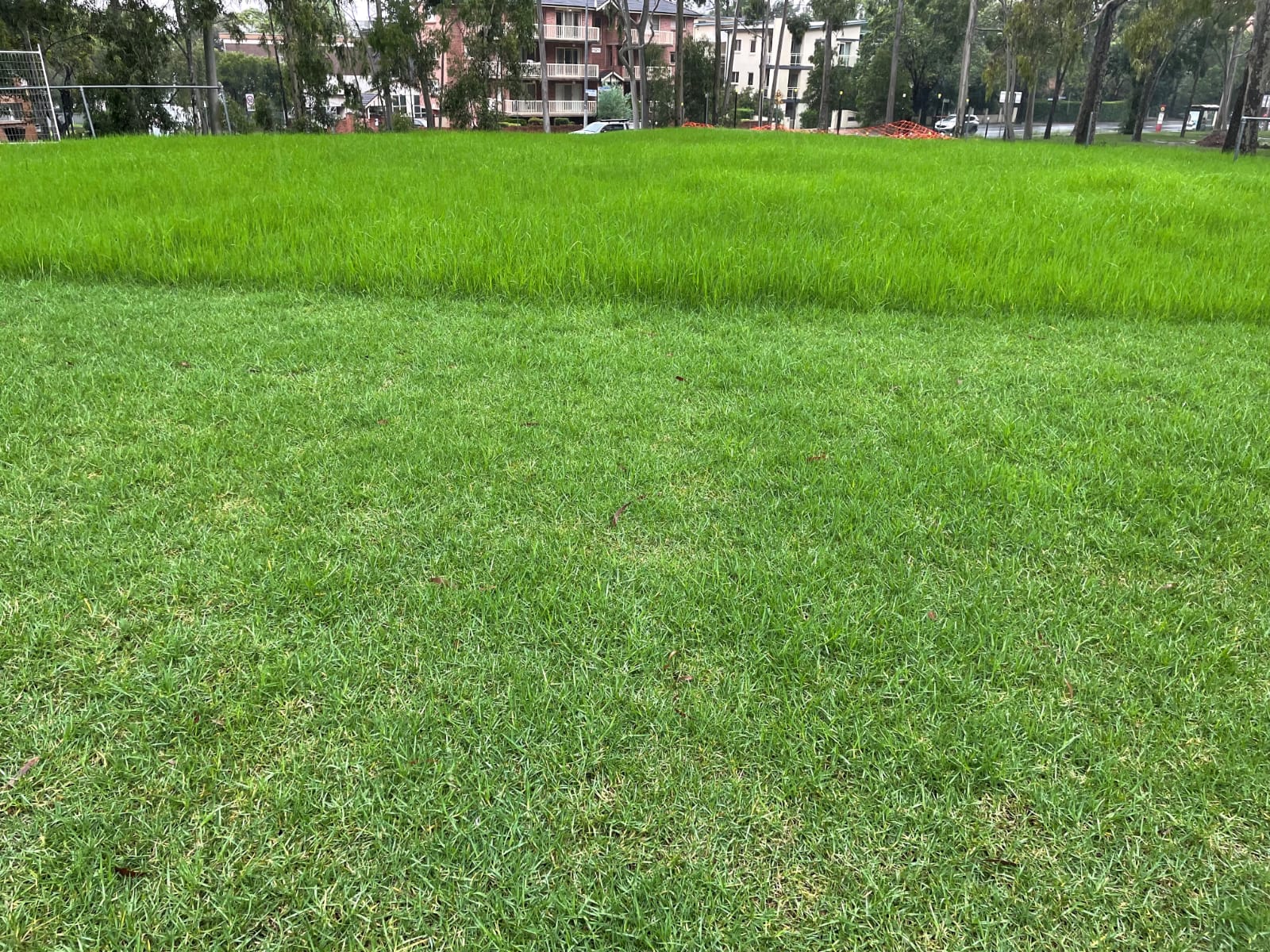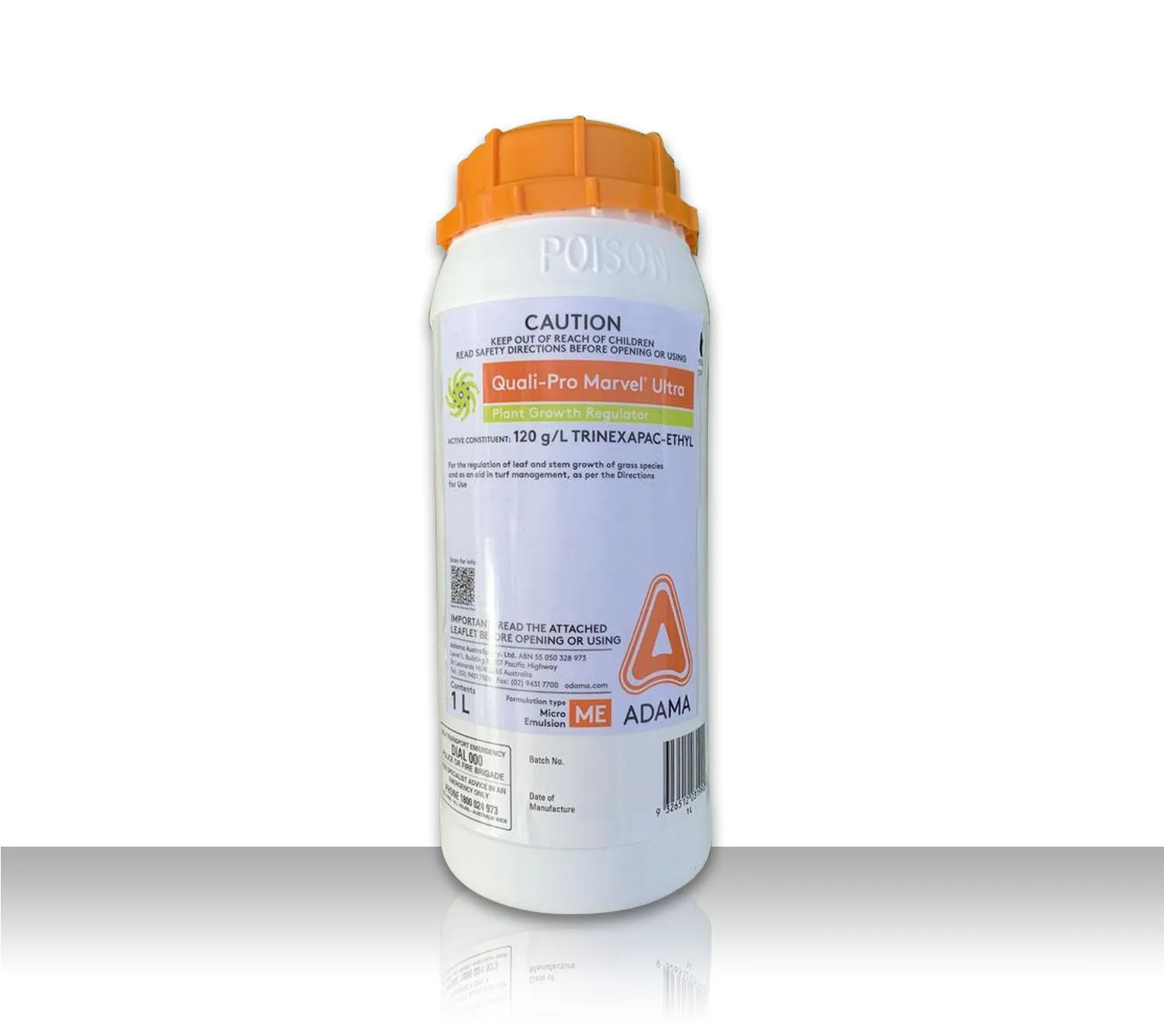PGR stands for plant growth regulator, they do exactly as the name suggests, they regulate plant growth.
Have you ever noticed during the growing season your green bin (for those lucky enough to have one) is completely full of grass clippings leaving no room for the rest of your green waste?
Have you ever noticed you mow your lawn only to come home the next day and think it’s grown an inch or two?
Well that’s where plant growth regulators like Primo Maxx and Marvel Ultra come into their own. Not only will they slow vertical growth but they decrease the internodal length (see below image) which creates a much tighter denser lawn.
To put it simply, it’s a better lawn with less work…
In case reducing mowing and clippings isn’t enough for you then consider that treated areas will use water 30% better! How does it do this? Well, there’s actually a combination of factors which contribute to this:
- Plant growth regulators create smaller leaves with less surface area for transpiration (moisture loss from the leaf).
- With reduced top growth the plant starts putting its energy into growing roots, this allows for a larger reservoir of water to draw from in the soil
- The density increase will reduce the evaporation of moisture directly from the soil.
Check out our range of plant growth regulators today.
How to get the best results on your lawn
Plant growth regulators are quite simple to use really.
- Simply calibrate your sprayer
- Add the desired amount of product and water
- Then spray evenly over the whole lawn
- Apply every 2-3 weeks as needed over the growing period
For best results, you can add a little iron from Lawn Play Enhance into the same mix to get it dense and dark green.
Not sure about calibrating sprayers or rates, contact the lawn genius who can easily assist with a plan of action.
Want to learn about the Simple Science that is Turf Plant Growth Regulators?
In a sentence, they inhibit the hormone (gibberellic acid) that promotes cell division and elongation.
In a more long-winded explanation though…
The turfgrass plant is an amazing machine with lots of processes occurring within the plants leaves and roots. Some of these processes, particularly growth processes, require plant hormones.
While plant hormones may be a scary new concept to a lot, did you know a lot of gardeners apply root hormones on a regular basis? They just don’t realise it.
Seaweed solutions like Lawn Play Seavival contain hormones like cytokinins (si-toe-ki-nins) which initiate root development and auxins (aux-ins) which do a whole host of things like assist with flower development. So that’s why you get such great results from seaweed on lawns and gardens. You’re supplementing the natural hormonal processes within the plant.
While auxins and cytokinins are hormones we are quite keen to encourage and we like to support the plant by adding more, gibberellic acid (jib-er-relic) is one we aren’t so keen to promote. This hormone initiates cell elongation and if you have a fast-moving lawn you are going to hate this guy.
So, now that we’ve given a bit of the background on plant hormones it becomes simple. The active ingredient in these plant growth regulators (trinexepac-ethyl) blocks the plant from producing too much gibberellic acid. Without it there’s less cell elongation and slower growth.
Want to learn more about the science or the process of applying then simply ask our lawn genius.


